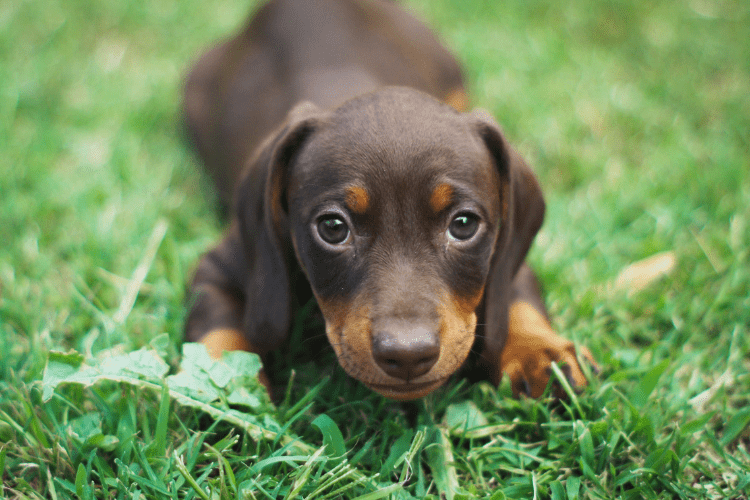Is it puppy season in your home? Puppies can be born at any time during the year – female dogs have bi-annual breeding cycles, and male dogs are willing to mate any female any time on heat.
What’s the best method when it comes to housetraining?
Your new puppy will arrive in your home completely ignorant of your house rules. The new environment may make them anxious. Don’t be shocked if one of the first things your new puppy does is wee on your carpet!
Give them plenty of guided opportunities to show them what you expect from them. This means you need to interrupt and redirect any unwanted behaviour.
Dogs develop routines so start training immediately. Give them rewards for going where you want them to go, but no excitement when they do it somewhere you don’t like! They’ll soon learn to do their toilet in the correct places.
Containment
Dogs instinctively avoid soiling their den, so make your whole house their den. Start by keeping them contained indoors – or in your direct line of sight. Limit their free movement around the house, and as they get older extend their den to the entire house. The more at home your pup feels, the less likely they’ll soil it.
Toilet area
You’re teaching your pup two things: where to do their business, and where not to. It’s preferable to teach your pup to do their business outside. But if you need to teach them to use a wee mat, then keep the mat in the same place and take them to it for every toilet break.

If you’re teaching your puppy to go outside, take them to the same spot every time. They’ll soon know their spot and that it’s time to do their business whenever you lead them there.
Reward
A reward is always going to register with your toilet training puppy!
Give your puppy praise and a treat every time they get their housetraining right. You’ll only need to do this while they’re still learning the house rules. But do congratulate them, every time!
Cue Words
Cue words work well. Keep it simple, find a word or phrase they won’t hear in normal conversation. They’ll learn what the cue word means soon enough. Eventually, you’ll be able to cue them on command.
Begin the process by saying the phrase just as they begin their business. Say it gently, you don’t want them to become alarmed and stop!
Reinforcement is key, so use the cue word every time they go in the right spot. Use it whenever you see that they’re about to do their business. They’ll soon make the association between the cue and the action.
Positive Reinforcement
Dogs quickly learn to repeat any behaviour that results in a reward. It’s that simple. That’s why it’s important to make clear, strict rules about where to do their toilet and where not to.
Consistency and timing will do the trick. Reward them for the desired behaviour there and then. A praise cue word is a good idea too.
Training schedule
For the first few weeks, expect to take your puppy to do his toilet upwards of 10 to 15 times a day.
When is it business time for a new puppy?
- First thing in the morning
- Immediately after each meal
- Straight after a nap
- Regularly throughout the day and evening (every hour to every few hours)
- Right before bed
Begin by taking him to the same designated toilet area once every hour.

Patience
There’ll be lots waiting in the first few weeks of toilet training. There’ll be times when nothing happens and you’ll want to give up. Don’t! They’ll pee on your floor!
Patience is the key to success. Eventually, your puppy will learn that going in the right place brings a quick reward.
When they get a little older, you’ll be able to lengthen the time between toilet breaks. Add an hour for every month, up to an 8 hour schedule. Smaller breeds are generally less able to hold it in as long as medium to large dogs.
Little pups can’t hold it in all night. For the sake of right behaviour you’ll have to take them out in the night. Always respond promptly to their signals to go outside.
Accidents
Accidents are just that: accidents. They’ll happen.
If your puppy is going in places they shouldn’t, interrupt them as quickly as you can. Simply stop them from doing it there and take them to the spot you’ve chosen to finish. Give praise and a treat, when done.
If you find evidence of an accident after the fact and don’t catch your pup in the act, simply clean up the mess as soon as possible and move on. No rubbing their noses in it. This will only upset and confuse them. Dogs only understand a correction if you catch them in the act of doing something wrong and interrupt them.
How long does it take?
It’s a process that can take more than a year, bigger dogs do tend to get the hang of it sooner than the little ones. Regression is common, and a fact of life. It’s a marathon, not a sprint.
Good luck!



